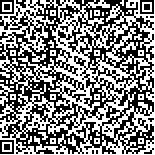| 摘要: |
| 于1990年、1994年、1997年每年4–7月,在青岛石老人沿海采集鹰爪虾样品,以精巢、胚胎及无节幼体为材料进行染色体的数目及核型的研究。染色体的制备均采用气干法,用Olympus显微镜进行观察,依据Levan等(1964)的分类标准进行核型分析。结果表明,鹰爪虾染色体的数目为2n=70, n=35。染色体的核型为2n=70=42M+10SM+12ST+6T,染色体总臂数为NF=122。根据染色体形态分析的结果,没有发现性染色体的存在。 |
| 关键词: 鹰爪虾 染色体数目 染色体核型 |
| DOI: |
| 分类号: |
| 基金项目:国家攀登计划B资助项目,PDB-6-5-1号;国家自然科学基金资助项目,39670579号 |
|
| STUDY ON NUMBER AND KARYOTYPE OF A MARINE SHRIMP TRACHYPENAEUS CURVIROSTRIS |
|
ZHOU Ling-hua, ZHANG Xiao-jun, XIANG Jian-hai
|
|
Institute of Oceanology, The Chinese Academy of Sciences, Qingdao, 266071
|
| Abstract: |
| The chromosome number and karyotype in a marine shrimp Trachypenaeus curvirostris which is an import commercial species for the Chinese fisheries were studied using the materials of testicular tubules, embryos and nauplius larvae. The shrimp were collected from the coastal areas of Shilaoren, Qingdao, Shandong Province in April to July, 1990, 1994 and 1997.
The tissue treatment process is as follows.
Embryos: They were collected in a beaker and immersed with colchicine solution, 1–1.5 hours later, the embryos were treated by hypotoniclysis firstly with seawater (50%) for 20min and then with KCL solution (0.075mol/L) for 10–20min.
Another method is to undertake the hypotonic treatment with sodium citrate solution (0.3%) for 20–30min.
Nauplius: They were placed in a beaker and immersed with colchicine solution, 2–2.5 hours later, the larvae were hypotonized with KCL solution for 20–30min.
Adult shrimp: Colchicines was injected (1.5μg per body weight g) into the muscle of the first or the second abdominal segment, and kept alive in seawater for 4–6 hours. Individual shrimps were then sacrificed, the testis dissected out and cut into 2–3mm pieces. They were hypotonic with KCL solution (0.075mol/L) for 20–30min.
All tissues were fixed with fresh Carnoy's solution (methanol: acetic acid=3.1) three times.
Chromosome preparation and observation: Embryo, larvae or pieces of testicular tubules were placed on a clean slide and spread using a forcep. The samples were stained with 5% Giemsa solution (pH=7.0). The spread plates were observed and photographed with an Olympus microscope.
Classification of chromosome was based upon the method of Levan et al (1964).
The testicular tubules from the shrimp were used as the experimental materials for determining chromosome complements of meiotic bivalents. The somatic cells from the embryos and nauplius larvae were applied for both of karyotypes and the number of diploidy chromosome was determined. The results indicate that the chromosomal number of shrimp Trachypenaeus curvirostris is: n=35 (2n=70). According to Levan's standard, the chromosomal karyotype of Trachypenaeus curvirostris is 2n=42M+10SM+12ST+6T. No sex-chromosome in the complements was observed. |
| Key words: Trachypenaeus curvirostris, Chromosome number, Karyotype |
